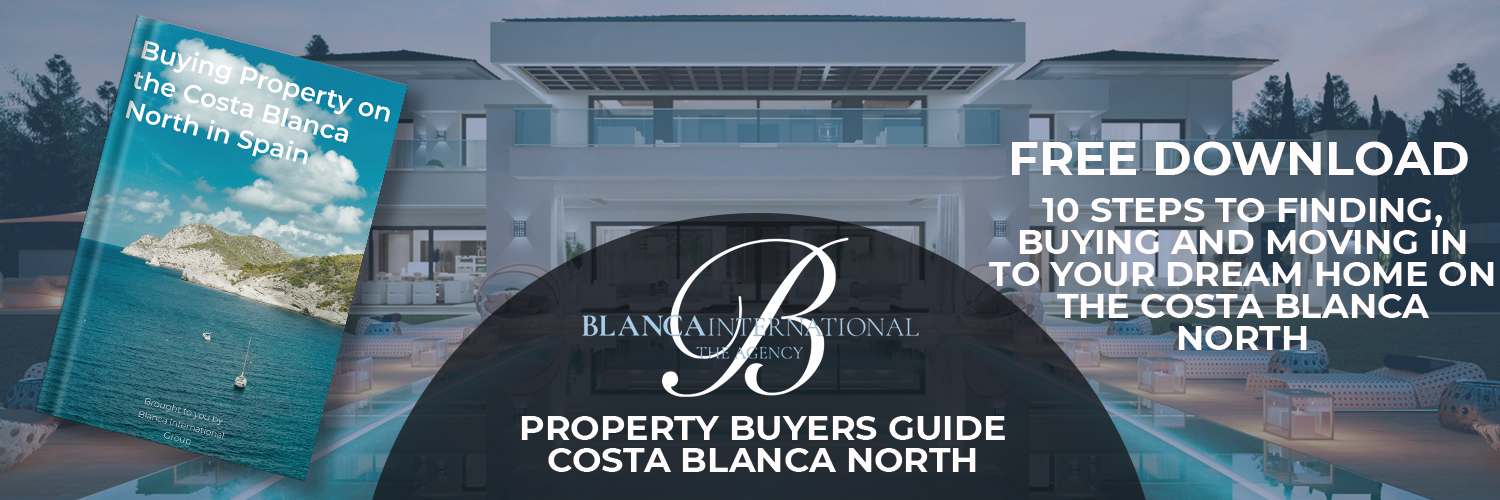What do Jimmy Choo, Mercedes-Benz, Dior and Zara Home have in common?
They’ve all launched new products above Cap Prim in Javea. The photo shoot location was Casa Sardinera, a multimillion luxury mansion owned by a Valencian baroness and winner of multiple international architecture and design awards.
If you thought anywhere outside the Arenal, Port, of Old Town of Javea lacked life – think again.
While it’s true the Cap Martí and Costa Nova residential areas are quiet and without a convenience store, their access to the headlands of Cap Prim (sometimes called Cap de Sant Martí) and Cap Negre as well as Cala Portitxol and Cala Sardinera beaches more than makes up for it.
Find out more about the beaches, views and legends of Cap Prim and Costa Nova.
Where is Cap Prim & Costa Nova in Javea?
If you’ve ever looked out to sea from the Port of Javea, to the southwest you’ll see the jagged headland of Cap Prim.
It’s one of the four main ‘capes’ in Javea (Cap in Valencian or Cabo in Spanish): Cap de Sant Antoni, Cap Prim, Cap Negre and Cap de la Nao. Cap Prim literally means the ‘thin cape’.
To walk up to the end of the headland is about an hour, if you park at the Creu de Portitxol stone cross on the Carretera del Portitxol. This stone cross is where for hundreds of years fishermen walked up from the beaches of Cala Sardinera and Cala Portitxol to bring their catch back to Javea Old Town.
Costa Nova is an urbanisation that’s just further along the Carretera de Portitxol. Property plots range up to 1,000-1,200m2 and Costa Nova is known as a quiet, residential place where most villas come with a pool and garden.
Nearby are the urbanisations of Cap Martí and Media Luna, as well as La Mar Blava with its multimillion euro villas overlooking the Illa de Portitxol island.
What shops and restaurants are there in Costa Nova?
Restaurante Trencall in Costa Nova is well known as one of the best places to eat paella in Javea.
There’s also the Everest Spice Indian restaurant, an Italian pizza house, the bar-restaurant El Trovador and a clutch more restaurants up towards Cap de la Nao.
There are currently no convenience stores or supermarkets. For most items you’ll need to drive 10 minutes to the Arenal (it’s an hour’s walk and there’s a steep hill climb!).
What are the beaches near Cap Prim & Costa Nova?
Cala Sardinera
La Cala Sardinera is a 200m-long bay and pebble beach, with ample sand too.
It’s a picturesque bay with crystal water and a fishing hut. You’ll have to walk through some woodland and down a gravelly track to reach it, so it mostly fills up with boats and yachts in the summer.
Read more about La Cala Sardinera beach.
Cala Portitxol
Cala Portitxol is a stunning pebble beach cove, with warm and shallow waters sheltered by the Illa de Portitxol island.
The beach has a famous fishing hut with blue doors, that Conde Nast named as one of the Mediterranean’s ‘most instagrammed’ spots. Cala Portitxol offers a number of watersports activities like kayaking and has its own bae and restaurant, Cala Clemence.
Read more about Cala Portitxol.
Cala El Pobret
You could spend 5 years in Javea and still discover new coves, caves and beaches.
Cala El Pobret is one of them – on the other side of Cap Prim from La Cala Sardinera. You can’t reach it by foot so it’s rarely populated. That could be why it’s called El Pobret or ‘poor thing’.
But Cala El Pobret is popular with scuba divers who visit the ‘Cave of the Virgen’. It’s a cave containing a red-white-and gold painted icon of Our Lady of the Forsaken – the patroness of Valencia and the Valencian region’s most popular saint.
Cala El Pom
Cala El Pom is another hidden cove that’s impossible to reach by foot.
But it’s a unique landform. Inside a cave in the cove is an active freshwater spring, which is crystal blue and has covered the walls with mineral deposits.
You can sometimes see tightrope walkers practising with harnesses above the Cala El Pom.
What are the viewpoints near Cap Prim & Costa Nova?
The Costa Nova region is within walking distance of three main viewpoints: Mirador de la Falzia, Mirador de L’Illa and Creu del Portitxol.
These each give stunning views over the Portitxol bay and island. La Falzia is located in a patch of pine woodland and is a popular weekend walk for families and dog owners. From Creu de Portitxol you can make the 30-minute walk to the end of Cap Prim.
History & legends of Cap Prim & Costa Nova
The Monastery of Saint Martin
The Cap Prim is sometimes called Cap de Sant Martí – that’s because there’s a small hermitage there dedicated to Saint Martin.
The hermitage was built in 1773 but is on private land. You can’t visit it. But legend says it was built on the site where Visigoth King Liuvigild in the 6th century AD chased down his son, Hermenegild, who had converted to Catholicism.
The pagan king destroyed a monastery here. The monks fled to the Illa de Portitxol.
Whether true or not, the monastery is officially dedicated to both Saint Martin and Saint Hermenegild.
The Lady of Loreto
In 1850 an Italian boat ran aground on Cap Prim during a storm.
Javea fishermen arrived to salvage any survivors, and found nothing but the ship’s bell and an icon of Our Lady of Loreto. This invocation of the Virgin Mary is commonly a patron saint of seafaring towns, air forces and the navy.
She soon became the patron of Javea’s port area and is paraded through the port on the final day of the Festes de la Mare de Deu de Loreto.
The ‘French’ Beach
The Cala del Francés is the first beach you can walk to from the Carretera del Portitxol.
It’s a stunning, small cove that gets its name from Swiss architect André-Louis Lambert Perret and his painter son André Lambert Jordán. They bought land in Javea in 1920 right next to Cala del Francés and that’s how it gots its name – though they were actually Swiss.
Together they painted many scenes of Javea. One of them was of the former ruins of the Castle of Saint Martín, which was a formed military outpots that was bombed in 1812 during the Peninsular War. This castle was dismantled to build a block of apartments in the 1960s.


